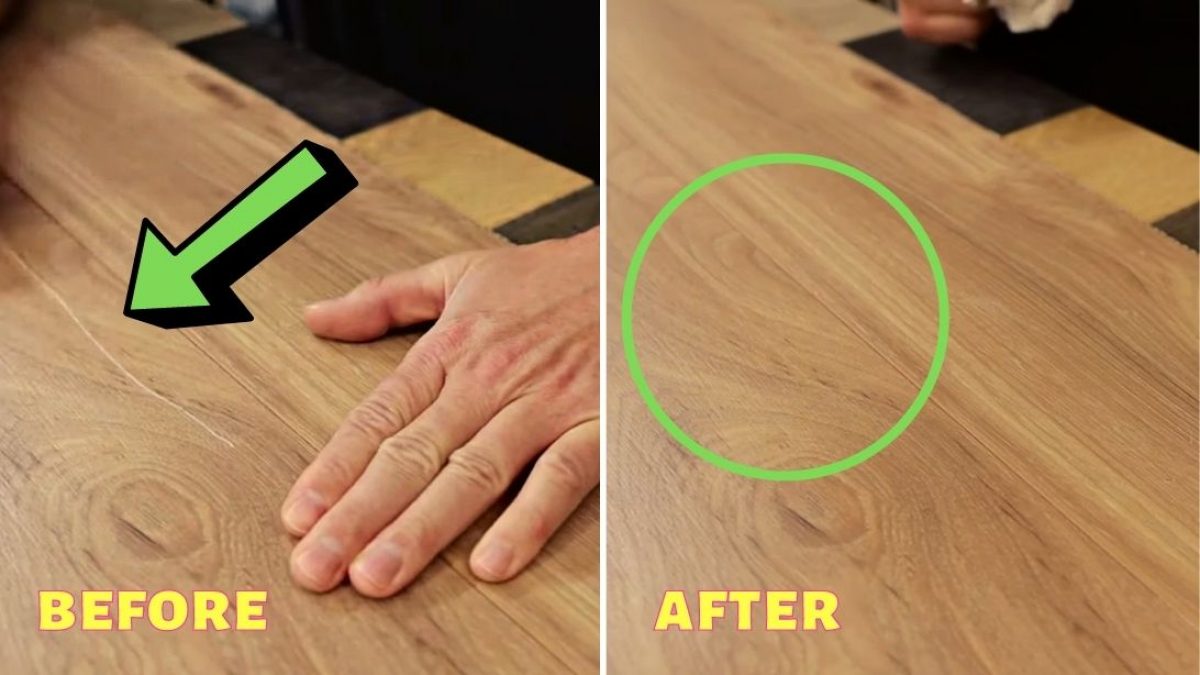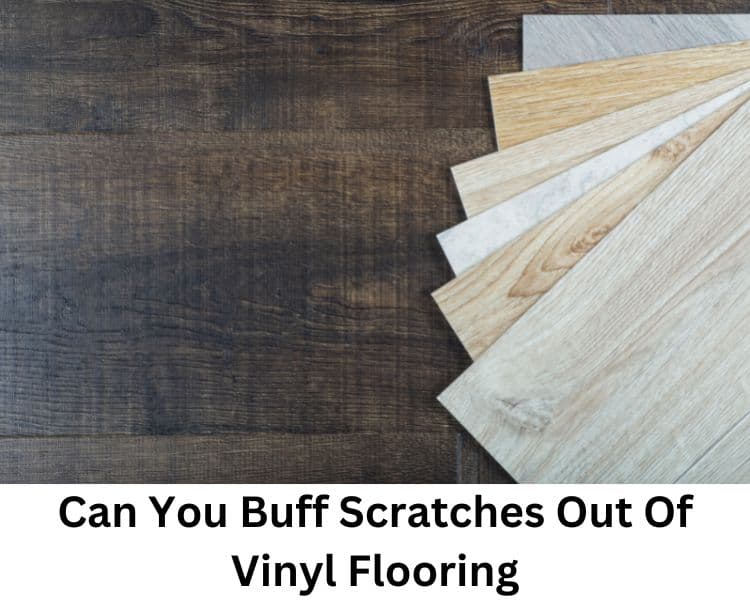Have you ever looked down at your pristine laminate flooring, only to catch a glimpse of a deep, jagged scratch marring its once flawless surface? The feeling can be akin to a sudden, sharp pang of disappointment, a reminder of how vulnerable your carefully chosen floor is to the wear and tear of everyday life. But before you despair, you might be wondering: can you actually buff out those scratches and restore your laminate flooring to its former glory? The answer, as with many things in life, is a bit more nuanced than a simple yes or no.

Image: mromavolley.com
Laminate flooring, with its durable and stylish appeal, has become a popular choice for homeowners. However, its attractiveness can be marred by scratches – a common occurrence, especially in high-traffic areas. While laminate is known for its resilience, it’s not impervious to damage. Knowing whether or not you can buff out scratches depends on several factors, including the severity of the damage, the type of laminate, and the tools you have at your disposal. But fear not, as we delve into the intricacies of scratch removal techniques, you’ll gain the knowledge and confidence to tackle those unsightly imperfections.
Understanding Laminate Flooring and Scratches
Before we embark on exploring solutions, we need to grasp the fundamentals of laminate flooring and how scratches manifest.
Laminate flooring is a multi-layered product engineered to mimic the appearance of natural materials like hardwood or stone. It consists of a core layer, often made of high-density fiberboard, covered by a decorative layer that provides the visual appeal. This decorative layer is then protected by a transparent wear layer, typically made of melamine or aluminum oxide, offering durability and resistance to scratches, stains, and fading.
While the wear layer is designed to withstand everyday wear and tear, it can still succumb to the onslaught of sharp objects, heavy furniture, or the relentless movement of foot traffic. Scratches can range in severity, from minor surface scratches that barely disrupt the visual appearance to deep gouges that penetrate the decorative layer, revealing the underlying core.
Assessing the Damage: A Critical First Step
Not all scratches are created equal, and the likelihood of success in buffing them out depends heavily on their severity. Here’s a quick guide to help you assess the damage:
- Surface Scratches: These are the most common type, appearing as shallow lines or marks on the surface of the wear layer. They usually don’t penetrate the decorative layer, making them the easiest to address.
- Medium Scratches: These scratches are deeper and visible, but they haven’t fully penetrated the decorative layer. They might leave a noticeable mark, but they haven’t exposed the core.
- Deep Scratches: These are the most problematic. They penetrate the decorative layer and can even reach the core material, exposing the underlying layers.
Buffing Out Scratches: Exploring Your Options
Now that you’ve assessed the damage, let’s explore some possible solutions for removing or minimizing those scratches.
1. The Gentle Approach: Cleaning and Polishing
For minor surface scratches, a gentle cleaning and polishing approach might suffice.
- Cleaning: Start by thoroughly cleaning the affected area with a mild detergent and warm water. Avoid abrasive cleaners that could further damage the surface. Let the area dry completely.
- Polishing: Use a specialized laminate floor polish or a furniture polish formulated for use on laminate floors. Apply a small amount of polish to a soft cloth and gently rub the polish into the scratch in a circular motion. The polish can help to fill in minor imperfections and restore some shine.
2. Filling the Gap: Laminate Scratch Repair Kits
For medium scratches, you might opt for a laminate scratch repair kit. These kits are designed to fill in scratches and blend them with the surrounding surface.
- Application: These kits usually contain a filler material that matches the color of your laminate flooring. The filler is applied to the scratch and allowed to dry. Once dry, the excess filler is removed, leaving a seamless finish.
- Effectiveness: The effectiveness of these kits depends on the severity of the scratch. They’re typically better at minimizing the appearance of medium scratches than deep scratches.
3. The Gritty Truth: Sanding and Refinishing
For those deep scratches that penetrate the decorative layer, more aggressive solutions might be necessary. Sanding and refinishing can be effective, but it’s a more involved process and requires some skill.
- Careful Sanding: Use fine-grit sandpaper to carefully sand down the affected area, working in the direction of the grain of the laminate. Be cautious not to sand too aggressively, as you can damage the wear layer and create further imperfections.
- Refinishing: Once the scratch has been sanded down, apply a laminate floor sealant to protect the exposed surface. This sealant can help to restore the sheen and protect the laminate from future damage.
4. When to Call the Professionals:
For severely damaged laminate flooring or for situations where you’re not comfortable undertaking DIY repairs, it’s recommended to consult a professional floor refinisher. They have the expertise and tools to assess the damage and provide the most effective solution.

Image: theniftyhouse.com
Beyond Buffing: Preventing Future Scratches
Preventing future scratches is a crucial step in maintaining the beauty of your laminate flooring. Here are a few helpful tips:
- Protective Mats: Place protective mats under furniture legs, especially those with sharp edges or heavy bases.
- Furniture Pads: Use felt pads or furniture sliders under furniture to minimize friction and prevent scratches.
- Clean Regularly: Regular cleaning helps to remove dirt and debris that can scratch the surface.
- Shoe Removal: Encourage the removal of shoes at the entrance to your home, especially if you have high-traffic areas.
- Caution with Sharp Objects: Be mindful of sharp objects like keys, knives, or other household items that can cause scratches.
Can You Buff Scratches Out Of Laminate Flooring
Conclusion: Empowering You to Take Charge
The appearance of scratches on laminate flooring can be a source of frustration, but it doesn’t have to be a complete disaster. By understanding the causes and types of scratches, the different buffing and repair techniques available, and by implementing preventive measures, you can effectively address those blemishes and maintain the beauty of your laminate flooring. The journey to restoring your floor’s beauty and prolonging its lifespan lies in your hands. Now equipped with the knowledge and insights to take action, your laminate floor will continue to grace your home with its elegance for years to come.






